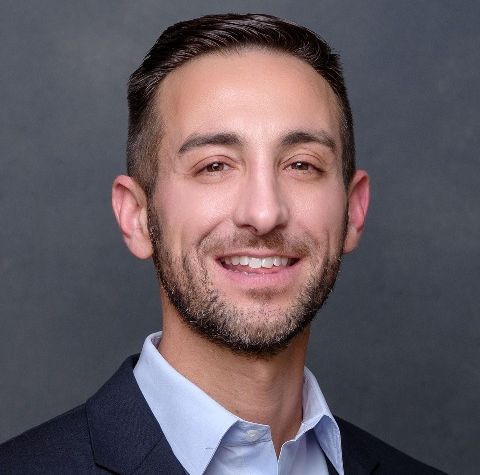- Center on Health Equity & Access
- Clinical
- Health Care Cost
- Health Care Delivery
- Insurance
- Policy
- Technology
- Value-Based Care
ISPOR Panel Explains CMS Pathway to Cover New Technology
A panel discussion highlighted a new pathway that allows Medicare to embrace new tools and pay for them while gathering the evidence needed to ensure the technology is safe and appropriate for an older population.
In March 2017, CMS issued its new rule for coverage of continuous glucose monitoring (CGM) for Medicare beneficiaries with diabetes, and what should have been a moment of celebration after years of advocacy turned into a collective scream.
The notice stated that anyone seeking CGM reimbursement could only use the receiver that came with the system—not the smartphone app that could display glucose data on a user’s phone or share it with a caregiver. The rule not only disarmed the technology of a key feature, it also forced Dexcom to disable app compatibility on any CGM shipped to Medicare enrollees.
For beneficiaries, the smartphone episode became the poster child for all that was wrong with CMS’ approach to technology. But it may have helped make the case for a new pathway, one that allows Medicare to embrace new tools and pay for them while gathering the evidence needed to ensure the technology is safe and appropriate for an older population.
The Transitional Coverage for Emerging Technologies (TCET) Pathway, proposed in June 2023 and discussed in a Viewpoint article published in JAMA Health Forum,1 was featured in “Revolutionizing Regulatory Pathways: Unleashing the Power of Real-World Evidence, Adaptive Trials, and Synergistic Collaboration for Expedited FDA Device Approval, Breakthrough Designation, and CMS Reimbursement,” a panel discussion that took place Tuesday at the ISPOR—The Professional Society for Health Economics and Outcomes Research meeting in Atlanta, Georgia.
The discussion, moderated by Renee Arnold, PharmD, RPh, of the National Institutes of Health, also covered reforms to improve technology success rates at FDA, use of real-world evidence in fit-for-purpose trials, and the emergence of CMS as a health technology assessment (HTA) agency.
More Coordination at FDA
In 2020, panelist Douglas Kelly, MD, came to FDA as deputy director and chief scientist of the agency’s device, diagnostics, and digital health branch after 30 years of trying to bring devices to market and seeing the struggle from the other side.
Douglas Kelly, MD | Image credit: LinkedIn

Kelly explained that for decades, his agency failed to acknowledge key differences between biotechnology and medical technology—drugs can reach the public comparatively quickly and at much lower risk than devices; thus, the failure rate for medical devices is 90%. As many noted during the conference, Kelly said FDA’s standard of “safe and effective” and Medicare’s standard of “reasonable, necessary, and appropriate” don’t always align.
With medical devices, he said, “no single stakeholder owns the process,” and coverage is far from guaranteed even if FDA clears the product; thus, it is very hard to get financing for medical device ventures. At the same time, from his time at FDA, he’s been shocked at how many potential applicants propose ideas having never talked to a patient outside the ones in their own practice.
The solution is TAP, which stands for Total Product Life Cycle (TPLC) Advisory Program.
“We believe that by bringing everybody together early, we can eliminate a lot of late-stage failure,” Kelly said. A group of TAP advisers coordinates discussions among stakeholders under the principle, “We don't tell doctors how to practice medicine; we listen to doctors about how they practice medicine and use that to help us decide where the real risks are in the in the device and its use.”
TAP has 2 phases. The diagnostic phase assesses the project’s status and what elements are missing; the second phase is a process and policy phase that presents options across FDA. The team members at TAP have a variety of backgrounds, Kelly said. “If you've got a problem, you can find somebody that solved it, or dealt with it before.”
The goal is to avoid pitfalls and reduce the failure rate. “We want to help innovators plan early for stakeholder risk.” It doesn’t make sense, he said, “to start your clinical study before you’ve really figured out what questions you need to ask and answer for all the stakeholders.”
Of course, patient concerns are the bottom line for FDA. “It is ethically dubious to subject a bunch of patients to a clinical study when the odds of you making it to commercialization are quite low,” he said.
TCET Allows Time to Gather Evidence
When CMS issued its infamous rule banning coverage of CGM if seniors used the technology with a smartphone, their reasoning was that a smartphone did not meet the definition of durable medical equipment. An attorney who had successfully sued Medicare to force CGM coverage called the restriction “nonsensical.”
Steven Farmer, MD | Image credit: CMS

But as Steven Farmer, MD, CMS’ chief strategy officer for coverage, explained, it’s the nature of innovation itself that can make advances in technology challenging to fit into Medicare benefit categories, which were created decades ago, before anyone imagined some of the devices that seem legitimate candidates for coverage today.
Medicare’s need to show there is evidence that a technology is “reasonable, necessary, and appropriate” for its distinct population can be challenging, too, as studies may leave out older patients or those with comorbidities. “We believe that setting high evidence standards is essential to ensuring that we're delivering the highest quality care for our patients,” Farmer said. “CMS is able to extend coverage to an item or service if it meets the reasonable and necessary standard.”
Medicare also looks at current standards of care in evaluating emerging technologies, and sometimes “there may be no established standard.”
The TCET pathway seeks to speak to these challenges, Farmer said. The idea is to grant coverage on a time-limited basis to create opportunities to gather evidence. He spelled out the guidance documents:
- Evidence review: Farmer said this explained how CMS reviews the body of evidence when deciding if an item or service is “reasonable” or “necessary.”
- Coverage with evidence development (CED): this outlines criteria applied to coverage determination (CD) studies.
- Clinical endpoints guidance series: these seek to define, what are the end points available within a therapeutic area? What end points are relevant to the Medicare population? How can we define a clinically meaningful difference? What duration of follow-up is needed?
“The idea is that by providing greater clarity on what our expectations are, manufacturers well upstream can be more effective in incorporating those inputs in their pivotal clinical studies,” and will be prepared to meet CMS’ expectations by the time they get to market, Farmer said.
Coming next is a fit-for-purpose study guidance. “At the near market stage, the TCET pathway seeks to accelerate our coverage reviews by engaging with manufacturers well before FDA market authorization,” he said. “In the proposed notice, we set an expectation of engagement with manufacturers approximately 1 year prior to FDA market authorization.”
As with FDA’s TAP initiative, the idea is to think through the details, such as coding issues, in a collaborative way that finds any evidence gaps proactively and develops a plan to address them in the postmarket period, through a CED study. The transitional coverage period is then time limited, with a clear set of expectations to monitor for safety signals and complete all studies.
He referenced the need for a “fit for purpose” study, which was a theme of the ISPOR 2024 meeting; this approach uses data to ensure that a system or program is operationalized in a way that meets patient needs in a particular setting or context.
“Whether something is a fit for purpose really depends on the question and the context in which the question is being asked,” Farmer said. “But we strongly encourage manufacturers to think through how to develop that fit for purpose study, and what data sources are available.”
Evolution of CMS as an HTA Organization?
Peter Neumann, ScD, of Tufts Medical Center, presented ideas from a paper he coauthored with former FDA and CMS official Sean Tunis, MD, MSc, now principal at Rubix Health. The paper, “Turning CMS Into a Health Technology Assessment Organization,”2 took the position that “CMS is being asked to evaluate drugs and devices in an increasingly complicated world,” Neumann said. This is especially true since there is no central HTA entity in the federal government, he said.
Peter Neumann, ScD | Image credit: Tufts Medicine

Certainly, CMS has evolved from its origins of paying claims—and expressly not interfering in how care was delivered. Of course, Neumann said, there was an interest in ensuring that public funds were paying for things that worked, and the agency's role evolved. A shift happened in 2001 with word that CMS would assess new technologies, and in 2006 came the creation of coverage with evidence development.
After FDA began granting breakthrough status for certain technologies, there was the need to think about covering devices in Medicare “when faced with substantial uncertainty about benefits, and risks,” Neumann said.
“The growing number of promising but expensive devices, and for that matter, drugs, has provoked fresh questions about how Medicare will evaluate and pay for them,” he said.
The 2022 controversy of whether to cover aducanumab following FDA approval raised new questions, and now, the Inflation Reduction Act shifts CMS’ assessment role into a whole new realm. “Negotiating prices, inescapably means evaluating clinical evidence underlying drugs,” he said.
“So again, you see CMS, increasingly stepping into this role of an HTA-like body, and it's very different one than we see overseas in other places, where HTA organizations evaluate evidence, usually at launch of drugs, and this is evaluating evidence, after drugs have been in the market for some time. Nonetheless, that's the idea.”
There are workforce challenges, ongoing needs for greater coordination with FDA, and a need to improve the coverage determination process with new legislative authority, Neumann said. “Ideally, this is not easy to do and will be a challenge in any environment, but certainly in this kind of polarized political environment. But the idea is legislative authority would shore up the ability to do CD, which is sometimes being questioned,” and should be clarified.
“We argue that again, like it or not, CMS is becoming a kind of HTA body. They should embrace the role in our view and do as good a job as [they] can.”
References
- Farmer SA, Fleisher LA, Blum JD. The Transitional Coverage for Emerging Technologies Pathway—enhancing innovation while establishing patient safeguards. JAMA Health Forum. 2023;4(8):e232780. doi:10.1001/jamahealthforum.2023.2780.
- Neumann PJ, Tunis SR. Turning CMS into a health technology assessment organization. N Engl J Med. 2023;389(8):682-684. doi:10.1056/NEJMp2305280
The Importance of Examining and Preventing Atrial Fibrillation
August 29th 2023At this year’s American Society for Preventive Cardiology Congress on CVD Prevention, Emelia J. Benjamin, MD, ScM, delivered the Honorary Fellow Award Lecture, “The Imperative to Focus on the Prevention of Atrial Fibrillation,” as the recipient of this year’s Honorary Fellow of the American Society for Preventive Cardiology award.
Listen
Promoting Equity in Public Health: Policy, Investment, and Community Engagement Solutions
June 28th 2022On this episode of Managed Care Cast, we speak with Georges C. Benjamin, MD, executive director of the American Public Health Association, on the core takeaways of his keynote session at AHIP 2022 on public health policy and other solutions to promote equitable health and well-being.
Listen
